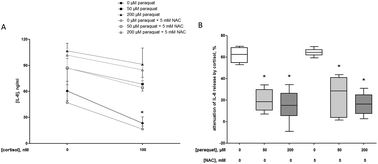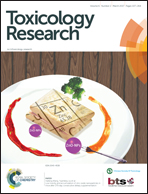Paraquat disrupts the anti-inflammatory action of cortisol in human macrophages in vitro: therapeutic implications for paraquat intoxications
Abstract
The herbicide paraquat (1,1′-dimethyl-4,4′-bipyridinium dichloride) has been banned in Europe since 2007 due to its high toxicity in humans. However, it is still widely used in Middle/South America and in Asia where it is annually associated with a high incidence of unintentional and intentional poisoning. Human macrophage-like cell lines were used to shed more light on the inflammatory response elicited by paraquat. Paraquat (3–1000 μM) reduced cell viability in a dose- and time-dependent manner. Exposure to 50 or 200 μM paraquat for 24 h elevated the release of interleukin 8 and gene expression of tumor necrosis factor-α. Expression of the 11β-hydroxysteroid dehydrogenase 1 gene tended to increase, while cellular glutathione concentrations decreased. The anti-inflammatory effect of cortisol was significantly disrupted. The paraquat-induced cortisol resistance could not be prevented by N-acetyl-L-cysteine. However, a polyphenolic extract of grape seeds consisting of monomeric and oligomeric flavan-3-ols (MOF) reduced paraquat-induced inflammation in the presence of cortisol to baseline. In conclusion, the results suggest that an impaired cortisol response may contribute to paraquat-mediated inflammation. Agents with pleiotropic cellular and subcellular effects on redox regulation and inflammation, such as plant-derived polyphenols, may be an effective add-on to the therapy of paraquat intoxications with glucocorticoids.



 Please wait while we load your content...
Please wait while we load your content...